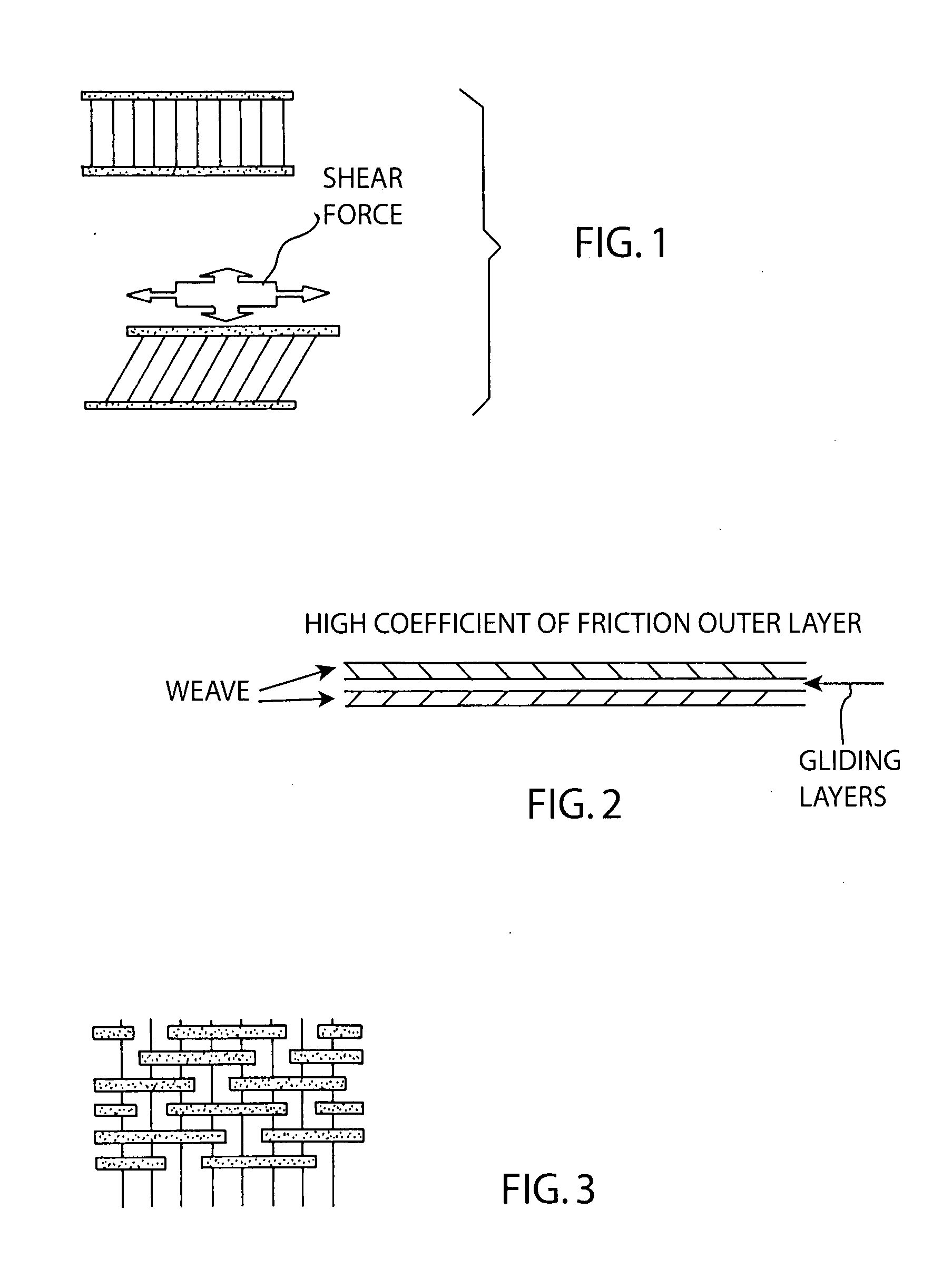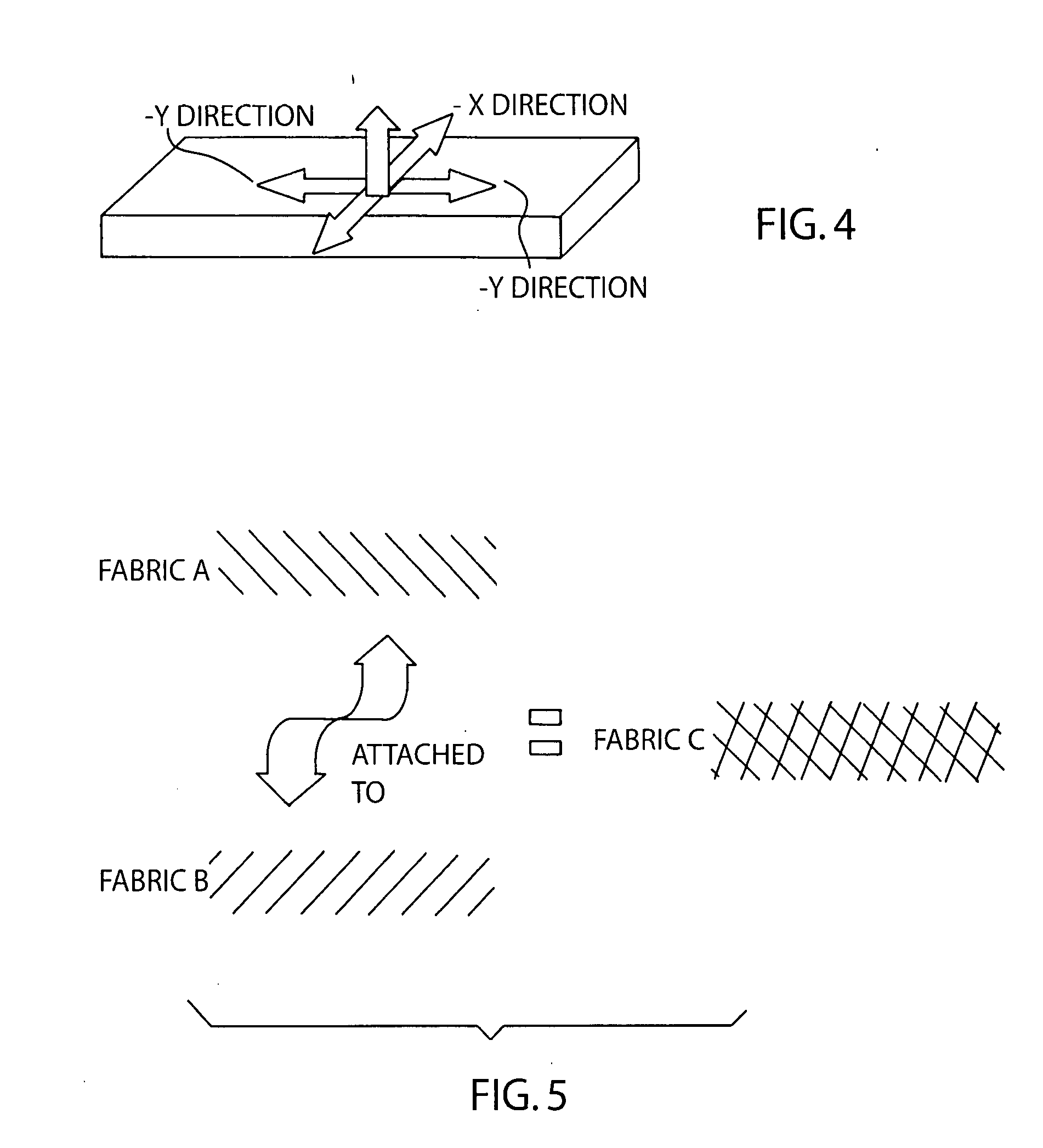Low friction fabric
a technology of low friction and fabric, applied in the field of fabric, can solve the problems of reducing the ability of individuals to detect when their skin has been injured, and reducing the ability of individuals to feel their feet, so as to reduce the likelihood of skin trauma, and reduce the effect of shear for
- Summary
- Abstract
- Description
- Claims
- Application Information
AI Technical Summary
Benefits of technology
Problems solved by technology
Method used
Image
Examples
example i
[0039]The cloth was placed between the heel and a Bertec force plate sampling at 120 Hz. The two components of the shear force is separated into an ±X medial to lateral (side to side) and an ±Y anterior to posterior (front to back) component with respect to the force collection plate. The positive and negative values only indicate direction of the force with respect to the center of the plate as seen in FIG. 4.
[0040]The graph of FIG. 6 shows the shear reactive force being applied across the heel for a period of time with the same fiber rendered in two different alignments. Fibers oriented at zero are aligned while those indicated at 90 are orthogonal to each other. The plot shows movement about the Z axis in the plane formed by X (medial to lateral) and Y (anterior to posterior) axes. Note that shear forces are minimized when fibers are oriented orthogonally.
example ii
[0041]Using a TMI (Testing Machines Inc.) Model 32-06 Slip Friction Tester was calibrated and was running in an environment of 72 degrees Fahrenheit at 40% humidity. The following test was performed:
[0042]An 8.5-cm by 33-cm sample of the fiber was fixed to the bed of the test unit. A 6.5-cm by 6.5-cm sample of the fiber was then fixed to the sled of the test unit with the fibers oriented in the same direction as the fibers on the test bed of the unit. This was designated as a 0 (zero) degree orientation. A test for static and dynamic coefficients of friction was then performed according to the ASTM D 1894 protocol. The static measurement is a reflection of the larger frictional forces during the initiation of motion while the kinetic measurement reflects the friction occurring once the sled was already moving. Thirty tests were performed using the same samples for each test.
[0043]The original sample on the sled was then replaced with a sample of the same fiber type with the directio...
PUM
| Property | Measurement | Unit |
|---|---|---|
| humidity | aaaaa | aaaaa |
| angle | aaaaa | aaaaa |
| friction | aaaaa | aaaaa |
Abstract
Description
Claims
Application Information
 Login to View More
Login to View More - R&D
- Intellectual Property
- Life Sciences
- Materials
- Tech Scout
- Unparalleled Data Quality
- Higher Quality Content
- 60% Fewer Hallucinations
Browse by: Latest US Patents, China's latest patents, Technical Efficacy Thesaurus, Application Domain, Technology Topic, Popular Technical Reports.
© 2025 PatSnap. All rights reserved.Legal|Privacy policy|Modern Slavery Act Transparency Statement|Sitemap|About US| Contact US: help@patsnap.com



